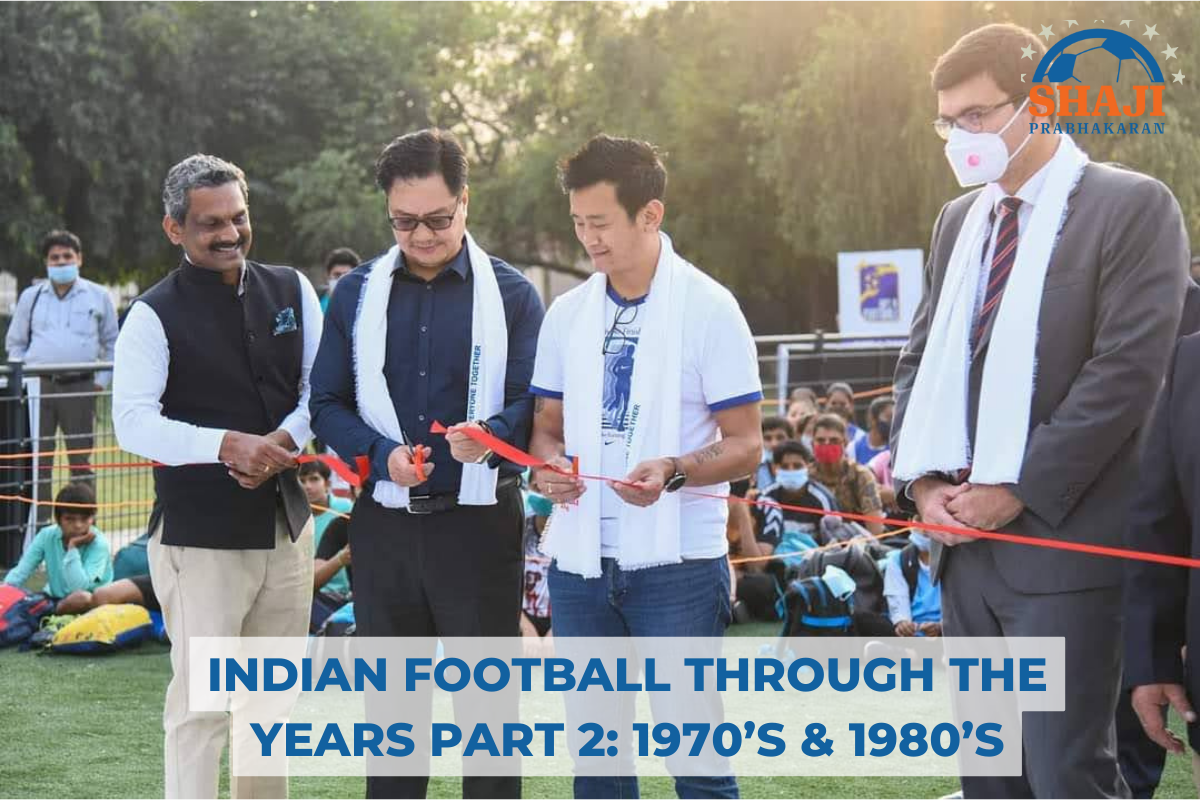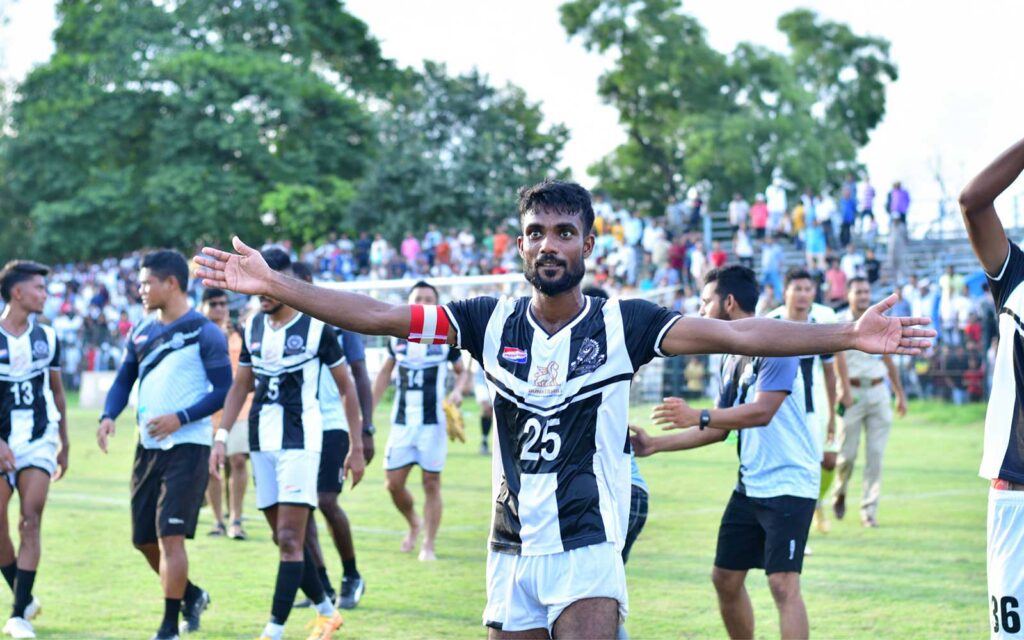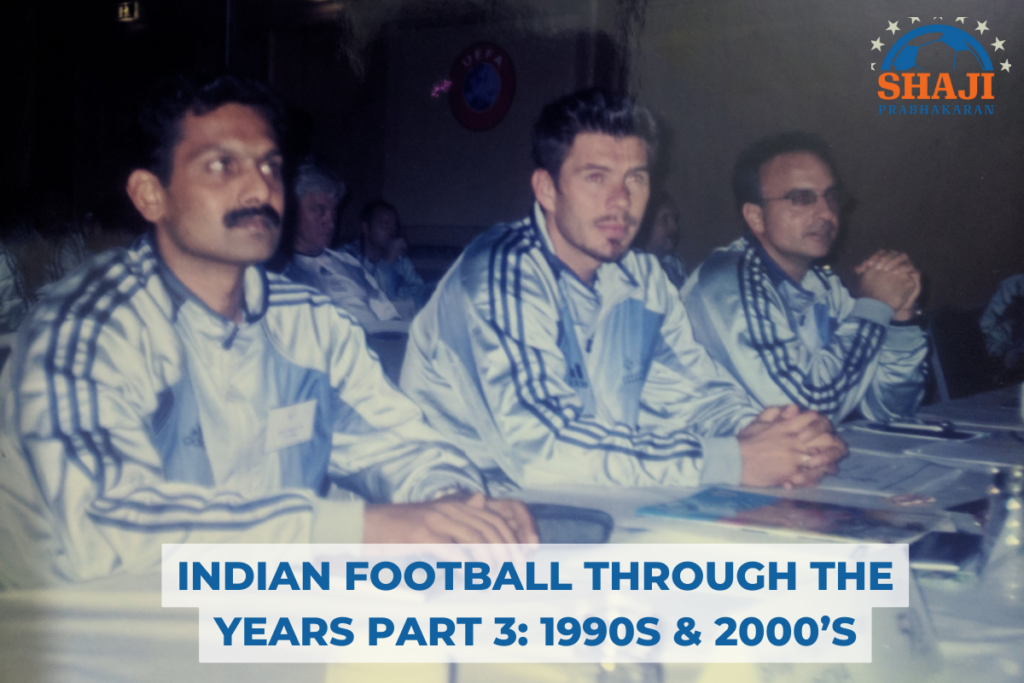After the highs of the 50s and 60s, Indian football started the 70s well, but that proved to be a bit of a false dawn as we stuttered our way through the latter half of the decade. The rise of cricket, the absence of a positive unified backing for Indian football, and the lack of proper structure led to the once respected and feared Indian team losing their position as a top team in Asia. The early 1970s The Indian team was managed in the 1970 Asian games by P.K Banerjee, the former India great. The team consisted of plenty of attacking talents like Shyam Thapa( East Bengal Club), Mohammed Habib( East Bengal Club), and Amar Bahadur( Mafatlal, Bombay). India was drawn alongside host Thailand and South Vietnam and started their campaign with a 2-2 draw against Thailand and a 2-0 win against South Vietnam. They were met with Japan and Indonesia in the quarter-finals where they beat Indonesia comfortably 3-0 but were narrowly beaten by Japan 1-0. They still managed to progress to the semi-finals as group runners-up. Burma were the opponents in the semi-finals and the South East Asian side proved to be too strong for India as they won 2-0. India then faced Japan again in the bronze medal match and Japan was regarded as favorites having won earlier but India produced a fantastic display to win the game 1-0 thanks to a strike from Manjit Singh. This was the last time India won a medal at the Asian Games.
“FIFA President Sir Stanley Rous who watched this tournament considered India as the best and most skillful team of the tournament”
Asian Youth Championship In 1971 the All India Football Federation sent the youth squad to the Asian Championships in Japan. The team managed to make it to the quarter-finals before losing out to Japan. The Indian team again participated in the Championship in 1972, this time in Thailand, although this time they did not even make it past the group stage. The 1973 Youth Championship was in Iran and India managed a better result by reaching the semi-finals. In 1974 India won the competition jointly with Iran as AFC called it a victory for both the teams after playing out a 2-2 draw. For India, the star of the 1974 Youth Championship was Shabbir Ali who was India’s best striker in the 70’s and 80’s. Shabbir was a prolific goal scorer both at the national and international level and his performances in the 1974 Youth Championships earned him praise from then Prime Minister, Indira Gandhi. Shabbir Ali scored 35 goals in international matches and remains one of India’s all-time top scorers ahead of Chuni Goswami, PK Banerjee, Inder Singh, and Bhaichung Bhutia.
Shabbir Ali’s hat-trick against Indonesia in the 1976 Merdeka international tournament in Kuala Lumpur in the first 35 minutes is the fastest hat-trick scored by any Indian in an international game
Inder Singh Arjuna Awardee Inder Singh also regarded as the finest striker of the late ’60s and ’70s started the Leaders Club in Punjab
His record of 23 goals for Punjab in the 1974-75 Santosh Trophy is still unbeaten
He made his debut for the national team in 1963 as the first player from Punjab and was selected to play for the national team in the 1964 Asian Cup in Tel Aviv. He finished as joint top scorer in the tournament with two goals as India finished second. He was also awarded the best right winger of the tournament. His major success came at the Malaysian tournament, Merdeka Cup where his performances won him a spot in the Asian All Stars XI team that played Arsenal in Kuala Lumpur. His performances also won him the attention of then Malaysian Prime Minister Tunku Abdul Rahman who asked him to play for the Malaysian national team. Mohammad Habib The son of legendary coach Syed Abdul Rahim from Andhra Pradesh is another name who entertained Indian fans from the late 60’s to the early 80’s.  Habib played a very important role in East Bengal’s young team as they embarked on a memorable season. He made his way into Kolkata football along with Shyam Thapa, Sayeed Nayeemuddin, and Afzal after East Bengal was looking for fresh blood.
Habib played a very important role in East Bengal’s young team as they embarked on a memorable season. He made his way into Kolkata football along with Shyam Thapa, Sayeed Nayeemuddin, and Afzal after East Bengal was looking for fresh blood.
“If I am not mistaken, he will be one of the best footballers in India in the coming years” – J.C Guha ( East Bengal Club Official)
East Bengal won the league title that very season clinching the title on the very last day and preventing Mohun Bagan from touching a unique record. Habib impressed Kolkata football by scoring for his team in the very first Kolkata Derby of his career. The Indian Maradona Krishanu Dey is one of the most creative midfielders India has ever had. Krishanu had a unique playing style. His technique was excellent and he had a sudden burst of acceleration which enabled him to beat the opposition defender. His peripheral vision was superb and he had a wide array of passes. His through balls could split the entire defence line. Starting from a striker position Dey evolved to playing on the left side of central midfield.
Subrata Bhattacharya, an ace defender in that era, singled out Krishanu as the most difficult player to mark.
1982 Asian Games India went on to face the big guns in the 1982 Asian Games held in New Delhi and managed a sixth-place finish below Japan but above China and Iran, with Iraq winning the Games. Nehru Cup 1984 The 1984 Nehru Cup was held in the football heartland of India, it was this edition of the cup that brought some of the most renowned players in the world at the time to come and participate in the tournament in India. The tournament featured five teams namely; Argentina, China, Poland, Romania U-21, and a team from Hungry. India failed to win a single game throughout the tournament, they went down 1-0 to the Argentine side which went on to win the FIFA World Cup in 1986. It was a thrilling performance by the Indian team but not satisfactory overall. The 1984 edition of the Nehru Cup was won by Poland, while China finished 2nd in the tournament. The relative lack of success on the pitch and internationally meant that football soon devolved to a poor cousin of cricket. Indian cricket’s watershed moment was the victory in the 1983 World Cup, and that moment captured the imagination of the nation. From then on, it has been a constant struggle to arrest the decline and rise as a power in the sport again.



